October 1922
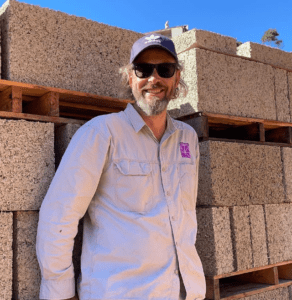
The Australian Hemp Council’s team caught up with Iggy Van from Hemp Squared to chat about building with hemp, the potential demand as well as the benefits, and how Hemp Squared are approaching the market with innovation and determination.
What are the basics behind using hemp in the building industry?
What is it that your company does and what are others doing with hemp in building?
Hemp in the building industry is developing quickly with weekly notifications of new or improved hemp based products. These can be structural hemp wood, reinforcement bar, hemp-lime products and insulation matting to name a few. The processes to make these products are different and the uses are different, but all share one common ingredient, Industrial hemp hurd. Most of the development of new products is happening outside of Australia, but innovative application of hemp building products is growing quickly here as well.
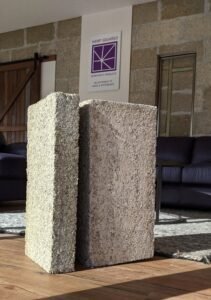
Hemp Squared is utilising very old technology to make hemp lime blocks. We mix hemp hurd, a lime based binder (slate, fly ash and one other mineral) and water, then form the blocks in a mould. Our blocks have a nominal density of 280-300 kg/m3. The blocks are used as a veneer that is attached to a structural framework of a house. This can be used for new buildings or to retrofit old ones in order to make them more comfortable to live in. This combination of products that different businesses supply can result in the most comfortable homes.
There are several ways to apply hemp-lime and there are different mixes available on the market. Spray and manual placement are other types of applications. Spraying may be quicker and manual placement will give a beautiful finish. Some mixes will include other elements such as cement and sand which will make the mix stronger. Hemp Squared has stayed with the original recipe, which does not include cement, to preserve the great properties it possesses. The blocks are manufactured to ensure a uniform density is achieved so that the final product is consistent and reliable. The blocks are delivered on site ready to use and no need for drying time, which enables a quick build.
What are some of the advantages from a utility perspective? Antibacterial, Mould and Fire Resistant? Longevity?
Hemp-lime composite, colloquially known as hempcrete has many properties; it insulates well, it has thermal mass properties. Hemp regulates humidity (hygroscopic), it is sound absorbing, it absorbs atmospheric carbon, it is vermin, termite and mould resistant and fireproof. Some people are scared away from the product because it is believed all features need to be achieved for hempcrete to be successful. We believe that this is not necessary and hempcrete can be installed in many different applications, from a good looking feature wall that provides thermal mass in a living room and gives the home owners bragging rights about their hemp wall, to a house that is super energy efficient and super comfortable to live in because most of the features are met.
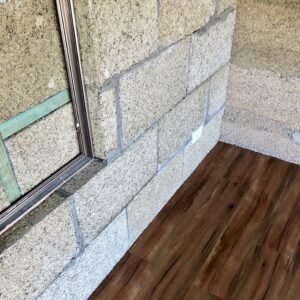
Antimicrobial and antibacterial are interesting and in our view need more research. Current research shows that the tendency for mould or mildew to grow is close to nil. We believe however if hempcrete is used in a house that is not breathable, mildew will develop. Unfortunately we have been brainwashed that house services such as walls, floors and ceilings need to be sealed but this just just creates a sealed esky. Most people know what happens when you have an esky that has a little moisture in it and the lid is sealed. With hempcrete, which should not be sealed, the humidity is removed from the space. This aids the ability for mildew and mould to grow. This combined with the unfavourable chemical composition of hempcrete make the product resistant to mould and mildew. But don’t seal the walls!
Hempcrete can last a long time. Centuries, even millenia. In Italy there is a house that was thought to be built out of limestone, but further research proved that it was constructed out of hempcrete. The house is 900 years old. In Japan a hempcrete house was built in 1698, it is still a beautiful example.
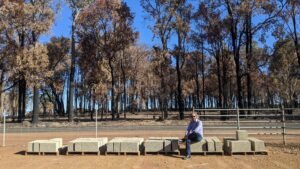
Hempcrete homes are able to withstand some natural disasters like bushfires better than conventionally built homes. Hempcrete is resistant to fire. The Hemp Squared manufacturing site was in the middle of the Bridgetown bushfires in February 2022. We experienced first-hand the devastation it can cause, but also how amazingly fire resistant the product is. Cured blocks that were stored on pallets only got scorched; the pallets they were stored on burned to a crisp. The blocks that were drying and had not cured yet also perished in the fire, It was a great demonstration of this feature. It is imperative that people realise that it is a component that can help you save a house in a bushfire coupled with other design and operational considerations, which are necessary to give the house every opportunity to survive.
What are the environmental benefits of using hemp to build your home?
Using hemp in a home has several environmental benefits; hemp sequesters carbon, which is highly beneficial as we move to reduce carbon emissions. Hempcrete itself is known to sequester even more carbon which is better still. At the end of the life of the building, hempcrete can be dug into the ground and will break down and be absorbed in the soil. It does not end up in landfill to cause further environmental harm as do your standard building products such as Plasterboard. The power required to grow, harvest, process and transport hemp and hemp hurds is low compared to other building products. The use of cement and cement based products which have a high level of embodied energy also produce significant amounts of carbon. Cement creation is the 3rd largest carbon emitter annually. Building with hemp can make a real difference to the ongoing energy use of a household, especially in heating and cooling. All this enables the people living in a hempcrete house to be comfortable whilst being carbon neutral or even carbon negative, a real difference from today’s standards with our reliance on air-conditioning for our comfort.
What are the costs of building in comparison to building a standard rendered timber home?
Building with hempcrete is still ‘new’ in Australia. Economy of scale is not achieved and this has an impact on the price of the materials. There are many ways to look at the cost of a home. If you just look at the materials, it will be more expensive. If you look at the complete building cost, it will be more expensive than a timber framed house with weatherboard and render. But compared to a double brick home, building costs when building with hemp blocks are similar per square meter of floor space. If a whole of life cost analysis would be conducted, taking into consideration the cost of living, a hempcrete house is cheaper than a timber house, even cheaper as a hempcrete house will stand much longer than a timber house. If you then take into consideration the future cost on the environment and cost to combat climate change damage, hempcrete is much cheaper. So in short the initial outlay is higher, the long term costs are cheaper.
If you consider comfort and health, which are hard to quantify in a monetary sense, there is no comparison between a hempcrete home and a timber rendered house. The hempcrete home wins. Ask people that live in a hempcrete house.
Where do you source and process your hemp?
When we started Hemp Squared we were looking at establishing a processing plant in the South West of WA to ensure supply. We moved away from that as Gary Rogers and David Campbell were establishing a plant in Margaret River. To bridge the time between our starting our block production and building grade hemp being available locally we have bought our hurd from France. The hurd is certified to the CenC building standard and that took one variable out of the equation for us to develop the product. We are now 2 years further and hope that we will be getting building quality hurd from local sources in the very near future.
Best part about working with hemp?
The passion people have. The amount of innovative ideas are phenomenal and it is hard to stay the course when you start up. There seem to be so many good ideas (we did make a hempcrete pizza oven!). The industry is growing and it is exciting to create a product and then establish local supply chains that have such positive impacts on multiple other industries. I can see many hemp fields in WA very soon.
The other part that we find very exciting is being able to develop products that will enable all layers of society to live in comfortable sustainable housing. We are developing social housing, specifically for people that are disabled and elderly. We hope that the course we set will enable us to be comfortable when we need a little more help when we are a bit older. And in this process we help to decarbonise the world, block by block.
Thanks to Iggy for taking the time to chat to the AHC today and discuss the growing building industry using industrial hemp to make comfortable and eco-friendly homes.






 As the Deputy CEO of the Northern Territory Farmers Association (NT Farmers), I am committed to advancing agricultural development in Northern Australia.
As the Deputy CEO of the Northern Territory Farmers Association (NT Farmers), I am committed to advancing agricultural development in Northern Australia.  Jaimie Milling is a fourth-generation farmer who has been in the agriculture industry all his life.
Jaimie Milling is a fourth-generation farmer who has been in the agriculture industry all his life.
 Ian Whitehouse, Co-Founder of 888 Fortune Enterprise, Tasmanian Development Corporation and Hemp Tasmania plays a guiding role in decision making and development strategies.
Ian Whitehouse, Co-Founder of 888 Fortune Enterprise, Tasmanian Development Corporation and Hemp Tasmania plays a guiding role in decision making and development strategies. 



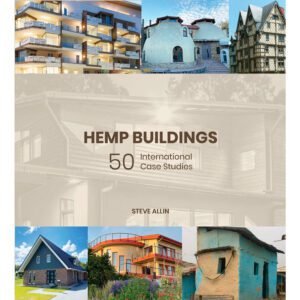









 Health
Health

 AVAILABLE PLANTING SEED:
AVAILABLE PLANTING SEED: Our Top 5 Cultivars have been developed without genetic modification to grow and thrive in most regions of Australia.
Our Top 5 Cultivars have been developed without genetic modification to grow and thrive in most regions of Australia.